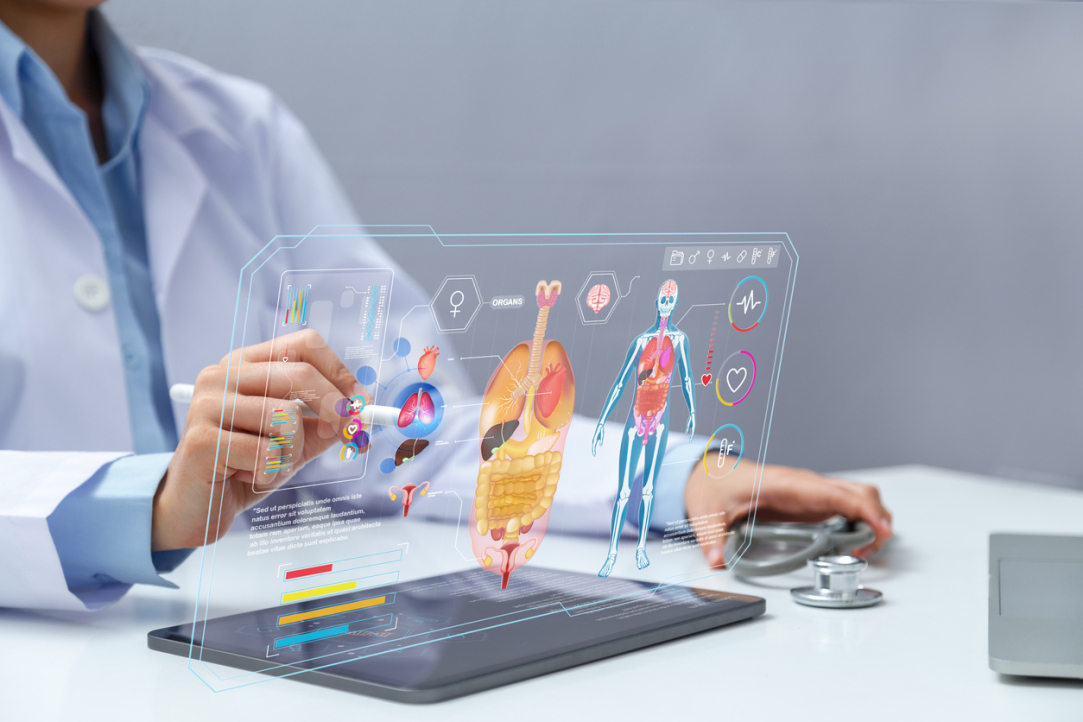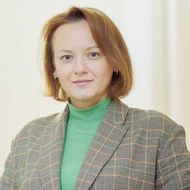HSE Scientists Propose AI-Driven Solutions for Medical Applications

Artificial intelligence will not replace medical professionals but can serve as an excellent assistant to them. Healthcare requires advanced technologies capable of rapidly analysing and monitoring patients' conditions. HSE scientists have integrated AI in preoperative planning and postoperative outcome evaluation for spinal surgery and developed an automated intelligent system to assess the biomechanics of the arms and legs.
At a joint scientific seminar held as part of the Human-Centred AI Strategic Project (in the framework of the Priority 2030 programme), HSE scientists presented two AI-driven solutions for use in medical practice. This field is not new for HSE University, noted Vice Rector Elena Odoevskaya in her opening address. Although the university does not offer educational programmes in medicine, it is involved in developing medical products and intends to enter this market.
'In terms of goals and objectives, we need to recognize that this is a product, not just a study. This means we must have partners, both external and industrial, and we need to understand how this product will continue to evolve with or without us. It’s all about the way we implement it,' she stressed.
Application for Spinal Marking
The first presentation focused on using AI for preoperative planning and postoperative outcome evaluation in spinal surgery. Vladimir Klinshov, Chief Research Fellow at the International Laboratory of Dynamical Systems and Applications of HSE Campus in Nizhny Novgorod, discussed how computer vision technologies can enhance the speed and quality of spine X-ray analysis, optimising the routine work of neurosurgeons. The working name of the product is VerteScan (derived from the word 'vertebra'). It is a service for viewing and analysing X-ray images of the human spine, featuring an automated marking system powered by artificial intelligence. 'We are developing a tool for automatic marking and analysis of spine X-ray images. We aim to relieve doctors of the routine aspects of their work, allowing them to focus on making the most important decisions. This product is designed by surgeons for surgeons. This means it will be intuitive for doctors, comfortable to use, and something they will want,' he said.
Spinal pathology accounts for 76% of patient referrals to the neurological service, and 72% of these referrals result in temporary disability. VerteScan will help identify the patient's anatomical features and disease progression, select the minimum appropriate level of surgical intervention, and provide personalised recommendations for implants and surgical techniques.
Medical institutions, manufacturers of medical implants, and professional associations of orthopaedic and spinal surgeons can be key partners in the project. To attract initial users and gather feedback, the developers plan to offer a free trial version of the software, with premium features available through subscription or a one-time payment.
If spinal surgery is performed suboptimally, it can accelerate the wear of intact vertebral motor segments, leading to treatment outcomes that are worse than the original condition, according to Andrey Bokov, Head of the Neurosurgery Department at Privolzhsky Research Medical University of the Russian Ministry of Health.
'Unless all relevant parameters are taken into account, the patient may feel better after surgery for a few years at most but is likely to experience decompensation afterwards. This person will spend an extended period on sick leave and be excluded from social life. If we can reduce the percentage of such cases, the social impact will be significant,' Bokov emphasised.
AI-Guided Physical Therapy
The second report featured an automated intelligent system designed to assess the biomechanics of the arms and legs. This system employs machine learning algorithms to analyse biomechanical data, which helps improve diagnosis and rehabilitation of patients significantly. The solution was presented by Andrey Kovalchuk, Project Head and Research Fellow at the Laboratory of Theory and Practice of Decision-Making Support Systems of the Faculty of Informatics, Mathematics and Computer Science, HSE Campus in Nizhny Novgorod. He emphasised that diseases of the musculoskeletal system are often described as the non-infectious epidemic of the 21st century. A promising area of rehabilitation for patients affected by these conditions is remote rehabilitation through digital technologies. Its implementation requires software-hardware complexes (SHCs) for video capture of movements.
The SHCs developed to date for remote motor rehabilitation share several common disadvantages: high cost, operational complexity, and the need for a doctor's constant presence. This makes them inaccessible for widespread use.
Remote rehabilitation helps increase the number of patients per doctor by reducing face-to-face interaction time while enhancing the quality of service by transferring some of the doctor’s functions to AI.
The patient no longer needs to visit the hospital, while still benefiting from a personalised approach and a flexible rehabilitation plan based on objectively measured parameters.

'As part of this project, we plan to develop a prototype of a mobile application using computer vision technology, designed for remote-controlled rehabilitation of patients. With this application, the doctor will be able to create an individualised training program for the patient and monitor key indicators, including the ratio of correctly to incorrectly performed repetitions per session and the angles of joint flexion,’ according to Kovalchuk.
The competitiveness of the system will depend on its autonomy, efficiency, and accessibility to a wide range of users, regardless of their location or financial circumstances.
The application will not only collect and analyse video data of movement scenarios and transmit it to the doctor for monitoring and correction, but also interact with the user in real time through voice commands, providing feedback on mistakes and events.
'The foundation of recovery is not medicine or even surgery; it is physical therapy. However, the movements must be performed regularly and correctly. Therefore, feedback on independently performed exercises is essential,' explains Anna Belova, Head of the Medical Rehabilitation Department at Privolzhsky Research Medical University and Chief Neurologist at the Ministry of Health of Nizhny Novgorod region.



